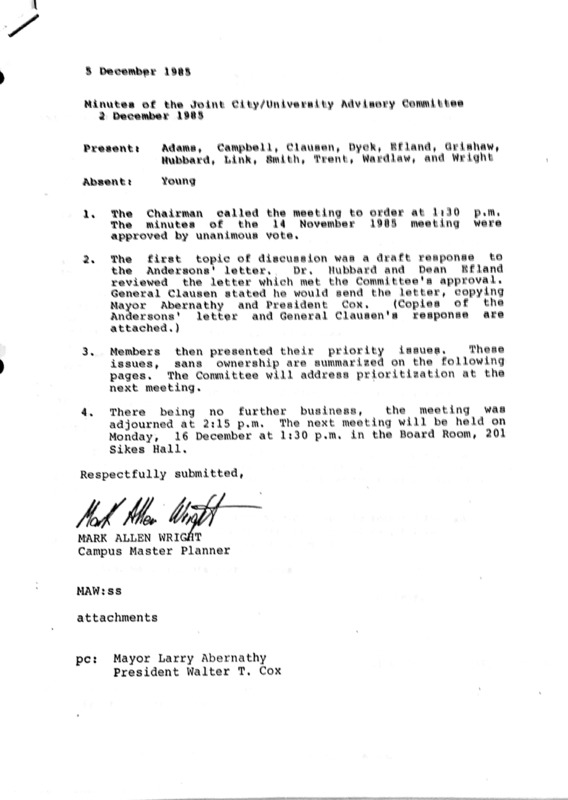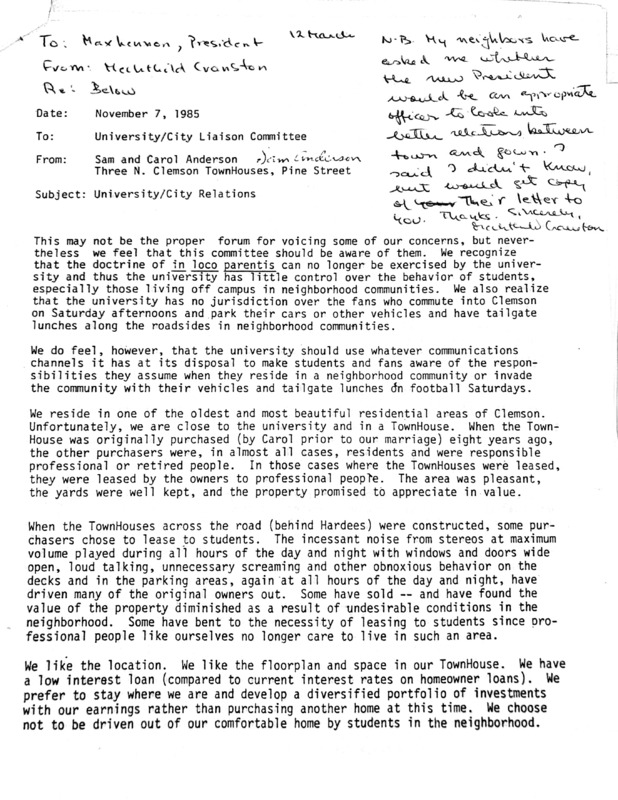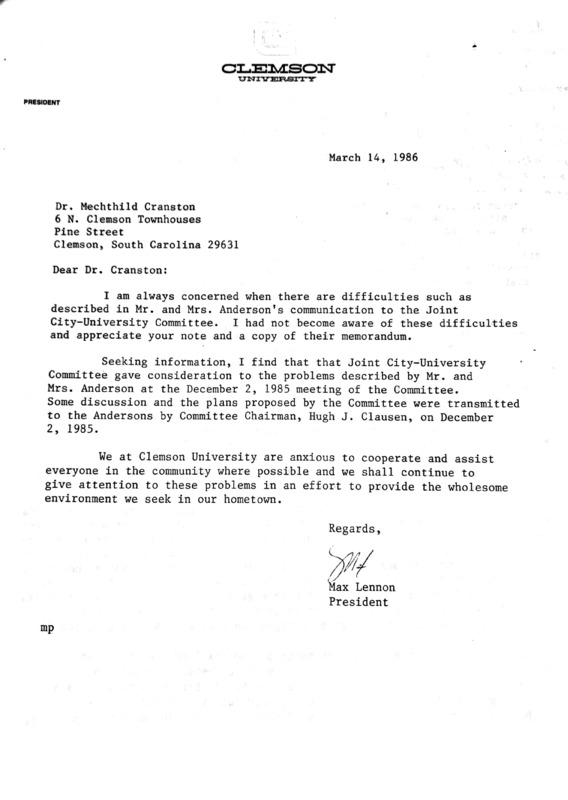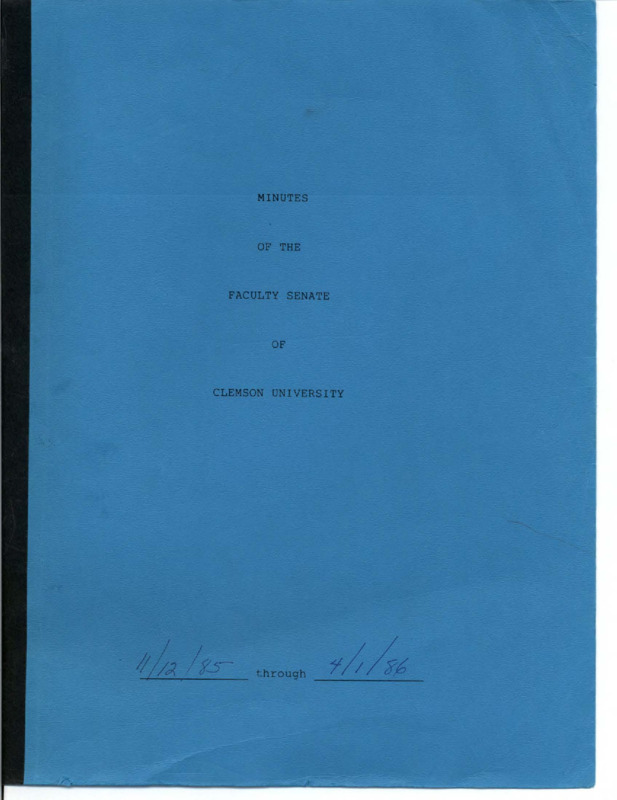Max Lennon
How Max Lennon began interacting with the nascent Joint Committee almost before his presidency began
The irritation of football traffic, parking, and remaining debris became a regular experience in Clemson city neighborhoods each weekend the Tigers hosted a game. Finally, one family decided to express their concerns to a burgeoning committee. After all, this committee sounded like an appropriate group and, what’s more, a new university president was due to arrive soon. Sam and Carol Anderson, who lived at Three N. Clemson TownHouses, Pine Street in the city, addressed their November 7, 1985 memo to University/City Liaison Committee. “We can and will pursue legal recourse if necessary,” they claimed in their two-page missive. They went on more hopefully, “We believe the university will be willing to cooperate with the city by communicating to the students the importance of maintaining the image of responsible citizenship when they assume the role of community residents.”
While this note made its way through the JCUAC per December 3, 1985 Minutes, it was forwarded to President Max Lennon by a neighbor, Dr. Mechthild Cranston, with a hand written note dated March 12, 1986. In his response to Dr. Cranston, President Lennon referenced action taken by the JCUAC and closed with words to assure his confidence in the process, ”We at Clemson University are anxious to cooperate and assist everyone in the community where possible and we shall continue to give attention to these problems in an effort to provide the wholesome environment we seek in our hometown.” These personalizing words, “our hometown,” lay claim to a type of leadership that carries through President Lennon’s long career at Clemson University.

Minutes from Joint City/University Advisory Council from December 3, 1985 addressing Sam and Carol Anderson's complaint.



